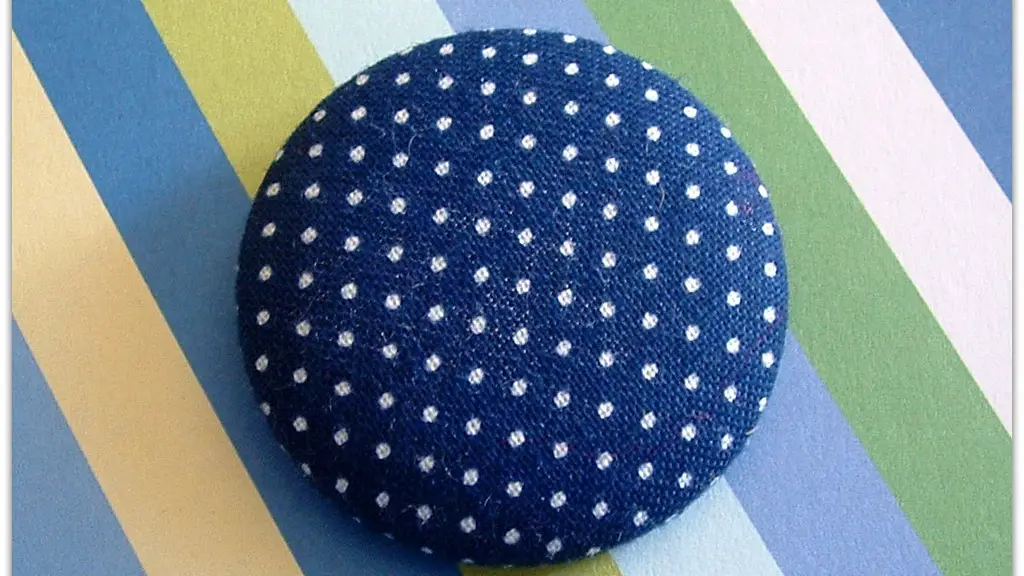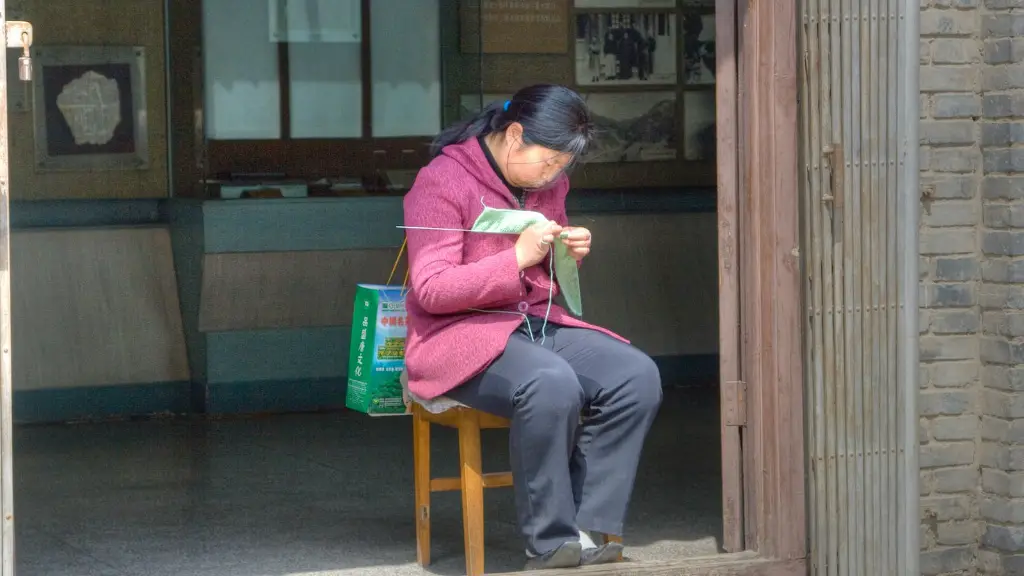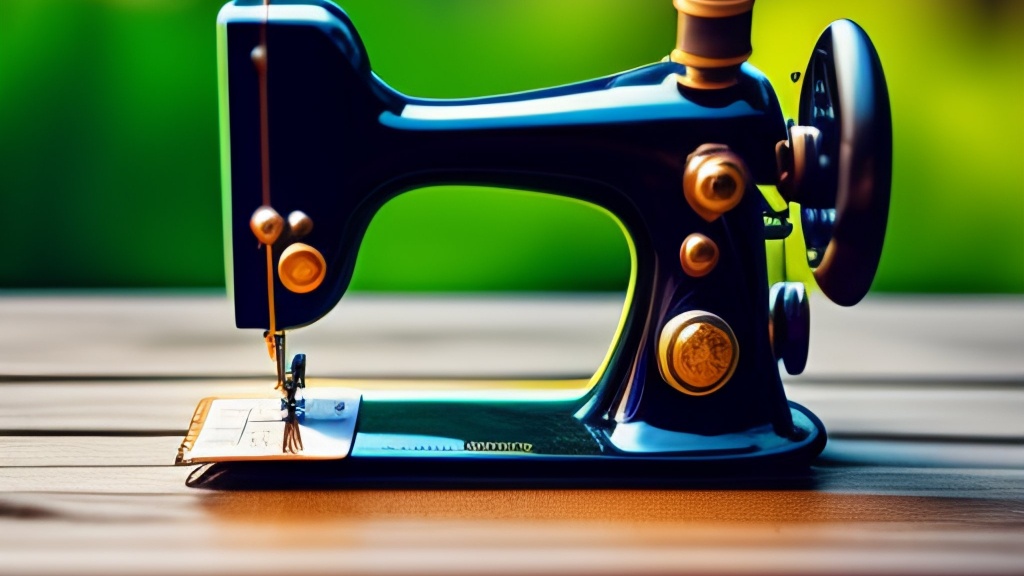Before Adjusting the Thread Tension
Before undertaking any adjustments to a Kenmore sewing machine, it is important to first become familiar with the components and controls of the machine. The top of the machine is home to the control panel, the power and thread take-up lever, the thread selector, and the tension dial. By consulting the user manual, the purpose of each component and control can be identified.
The power switch needs to be in the ‘off’ position before any adjustments are made. It is also necessary to adjust the thread take-up lever to its highest point. Finally, the needle needs to be in the highest position prior to any tension adjustments.
Understanding Thread Tension
In order for a sewing machine to produce a desired stitch, the tension of the thread needs to be adjusted accurately. Thread tension is regulated by the tension dial, which can be found on the front panel on the face of many of today’s machines. The tension dial contains a series of metallic discs which open and close as the dial is turned to tighten or loosen the thread.
When the tension is set correctly, the needle thread should be visible on the underside of the fabric and the bobbin thread should be visible on the top. As a general rule, the tension should be set to a slightly looser setting when sewing on thicker or heavier fabrics, or else it can make the fabric pucker.
Adjusting the Thread Tension on Kenmore Sewing Machine
Adjusting the tension on a Kenmore sewing machine is relatively straightforward. Firstly, cut the needle thread and separate the two threads from the material. Before making any adjustments, the power should be turned off and the needle should be in the highest position.
The tension dial is located on the front panel of the machine and can be adjusted by turning it clockwise to tighten the thread, or counter-clockwise to loosen it. To ensure that the tension is set correctly, an ‘X’ test can be done by sewing a few overlapping stitches onto a scrap of fabric.
The bobbin thread should be visible on the top side of the fabric and the needle thread should be visible on the underside. If the threads are not visible on both sides, then the tension needs to be adjusted further.
Using the Bobbin Case Tension Disc
The bobbin case tension disc can be used to fine-tune the thread tension settings of a Kenmore sewing machine. To do this, the bobbin case should first be removed from the machine. This can usually be done by unscrewing the bracket at the top of the bobbin case.
Once the bobbin case has been removed, the tension disc can be identified by looking for a tab at the end of the bobbin case. Turning the tension disc clockwise will tighten the tension and turning it counter-clockwise will loosen it.
For repairs and maintenance, it is possible to purchase a bobbin case tension gauge online. These can be used to measure the tension being applied to the thread by the bobbin case.
When to Replace the Needle
It is important to check the condition of the needle regularly as it can affect the tension of the thread. If the needle appears bent or damaged, then it should be immediately replaced with a new one.
For all fabrics, the correct needle size should be used, with sharp ones being used on fabrics such as linen and wool, and ballpoint or stretch needles being used on fabrics such as knits. The type and size of the needle also needs to be selected correctly, as this can affect the tension settings.
Preventing Tangled Threads and Thread Breaks
Tangled threads and thread breaks can be an indication of incorrect tension settings. To prevent this from happening, the thread should be threaded correctly and the take-up lever should be properly adjusted. It is also important to check the bobbin case for signs of damage, as this can cause the thread to become tangled.
If the thread is tangling despite having the correct tension settings, it can be a sign that the needle is bent or damaged. In this case, it should be replaced with a new one. Installing a new needle can also be a good way to prevent thread breaks and ensure that the thread is wound correctly.
Cleaning and Lubricating the Machine
Regularly cleaning and lubricating the machine will help ensure the thread tension is maintained. This should be done every time the machine is used, or at least once a month.
To clean the machine, a damp cloth should be used to wipe down the surface of the machine. This should be followed by a light application of sewing machine oil. This will help to keep the machine well-lubricated and reduce the risk of thread tangling and breaking.
Troubleshooting Common Thread Issues
When troubleshooting thread issues, it is important to first determine the cause. If the tension is set incorrectly, the stitching should be tested on a scrap of fabric. If the thread is tangling and breaking, the needle should be checked for signs of damage and replaced if necessary. The bobbin case should also be checked for signs of damage and the tension disc should be adjusted until the tension of the thread is correct.
If the thread is still tangling and breaking, the machine may need to be serviced. Regular servicing and maintenance can help to ensure that the machine is in good working order and the amount of wear and tear can be reduced.
Testing Different Thread Types and Weights
For different types of fabric, different types and weights of thread can be used. Cotton thread is suitable for most fabrics and is available in different weights, ranging from extra light, to light, to medium, to heavy. It is important to use the correct weight of thread, depending on the type of fabric being used.
For thicker and heavier fabrics, a stronger thread may be needed. Polyester thread can be used for these heavier fabrics and is available in both medium and heavy weights. Different threads can also be tested to see which is most suitable for a particular project.
Using Thread Conditioner to Strengthen the Thread
Thread conditioner can be used to strengthen the thread, making it less likely to break and less likely to cause tension issues. Many commercial thread conditioners are available, but it is also possible to make a homemade version using wax and oil.
Thread conditioner is applied to the thread before it is used, and can help to reduce the amount of wear and tear on the fabric and the thread. It is important to apply the conditioner evenly, as this will ensure the thread is smooth and less likely to cause the machine to jam.
Using a Thread Stand to Organize Threads
A thread stand is an important tool for any sewing machine. It will help to keep multiple threads organized and accessible, as well as reducing the risk of tangled threads.
The thread should be passed through the thread stand before it is threaded through the machine. This will reduce the risk of the thread becoming tangled, or the machine becoming jammed. The thread stand should be set up in a well-ventilated area, away from direct sunlight and any sources of heat.
Making Minor Adjustments to the Machine
It is important to ensure that the machine is set up correctly before beginning to sew. This includes checking that the needle is in the correct position, that the thread is properly wound, and that the bobbin is in place. It is also possible to make minor adjustments to the machine, such as increasing the stitch length and width, or changing the footplate tension.
These minor adjustments can help to ensure the machine is producing the desired stitch. The user manual should be consulted for more detailed information about how to adjust the machine for different projects.



